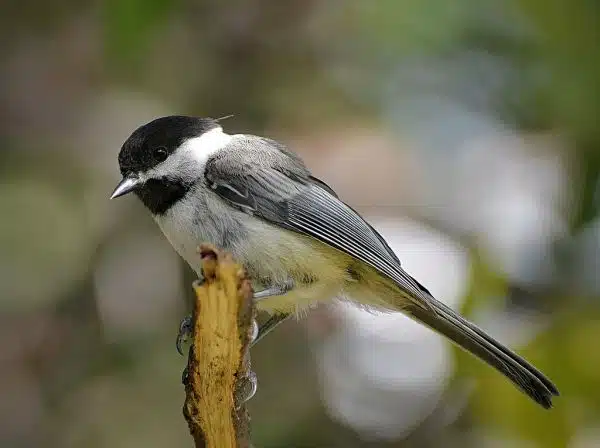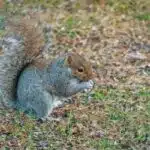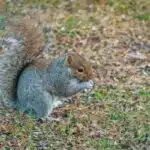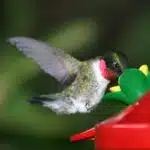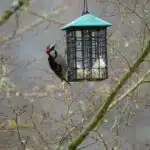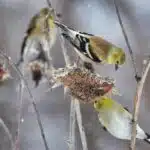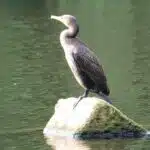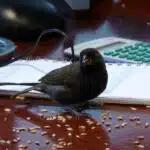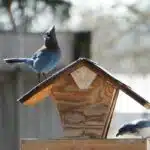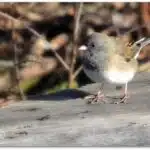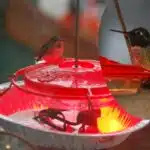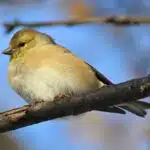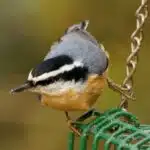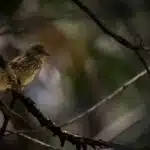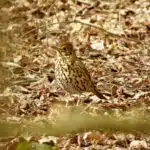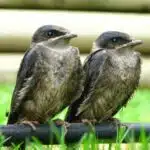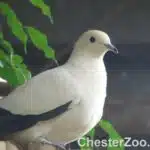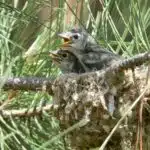Birdwatchers, enthusiasts and even casual observers are often fascinated by the chickadee. These small birds are known for their distinctive vocalizations and energetic movements that make them a joy to watch in any backyard. For many bird watchers, attracting these charming creatures is one of the most rewarding aspects of their hobby. However, attracting chickadees can be challenging as they can be picky about their habitat and food sources. In this article, we will explore various ways to attract chickadees to your backyard and provide tips on how to create an environment that attracts these delightful birds.
Chickadees are members of the tit family and are found throughout North America. They are most commonly found in woodlands, forests and suburban areas with trees or shrubs. Chickadees are primarily insectivores but also feed on seeds during the winter months when insects are scarce. To attract chickadees, you need to create an environment that provides shelter, food, and water. This can involve planting specific types of trees or shrubs in your yard, providing a variety of bird feeders with different types of seed blends or offering fresh water sources such as birdbaths or small fountains. By taking these steps, you can help ensure that your backyard becomes a haven for these delightful little birds while also contributing to their overall wellbeing.
The Fascinating World Of Chickadees
Amidst the flutter of wings and chirping of birds, a tiny creature stands out – the chickadee. These small birds with their distinctive black caps and bibs can be found flitting around gardens and woodlands across North America. But there’s more to these feathered friends than meets the eye.
Chickadees are known for their vocalizations, which include a variety of songs, calls, and alarm notes. These sounds are used to communicate with each other and help maintain social bonds within their flocks. In fact, researchers have identified over a dozen different vocalizations that chickadees use to convey specific messages.
When it comes to nesting habits, chickadees are one of nature’s expert builders. They construct their nests in tree cavities or birdhouses using materials such as moss, hair, and feathers. Interestingly, they also line their nests with fur from animals like rabbits or deer – a cozy touch that keeps their chicks warm during chilly nights.
By understanding chickadee vocalizations and nesting habits, we can gain insight into these fascinating creatures’ behavior and habitat preferences. Join us as we delve deeper into the world of chickadees and explore ways to attract them to your backyard.
Understanding Chickadee Behavior And Habitat
Chickadees are primarily insectivorous and granivorous, and will seek out a variety of items from bird feeders, including sunflower seeds, peanuts, suet, and mealworms. Chickadees are cavity nesters, and require a nest box with a small entrance hole to provide a safe place to lay eggs and raise young. Migration patterns vary depending on geographic location, with some chickadees remaining in the same area year-round, while others will migrate south during the colder months. During the wintertime, chickadees may form flocks and migrate to areas with a reliable food supply. In the springtime, they will disperse to breed.
Feeding Preferences
Imagine standing outside on a crisp fall morning, surrounded by the sounds of nature. Suddenly, you hear the cheerful chirping of a chickadee. As a birdwatching expert, you know that attracting chickadees to your yard requires understanding their feeding preferences.
Chickadees are primarily insectivorous, but they also enjoy seeds when insects are scarce. Timing is crucial when it comes to feeding these birds. They prefer to feed early in the morning and late in the afternoon when insects are most active. Providing food during these times will increase the likelihood of attracting them to your yard.
When it comes to preferred food types, chickadees have a variety of options. They are attracted to insects such as caterpillars, beetles, and spiders. Additionally, they enjoy seeds from trees such as conifers and birch trees. Offering both insects and seeds in appropriate quantities is essential for attracting these delightful birds to your yard.
By understanding the feeding preferences of chickadees, you can create an environment that is welcoming to them. By providing them with their preferred foods at the right time and in the correct quantity, you can attract these curious and energetic birds to your backyard for years to come without disturbing their natural behavior or habitat.
Nesting Requirements
As a birdwatching expert, understanding the nesting requirements of chickadees is crucial in creating a welcoming environment for these delightful birds in your backyard. Chickadees are cavity nesters and prefer to build their nests in small holes or crevices in trees or other natural structures. Providing adequate nesting materials such as soft grasses and feathers can help attract chickadees to your yard.
In addition to providing nesting materials, predator protection is also vital for successful chickadee nesting. These birds are preyed upon by larger animals, such as squirrels and cats. To protect them from predators, it is essential to provide safe nesting boxes that are placed high off the ground and away from potential threats.
Overall, understanding the nesting requirements of chickadees can help create a safe and welcoming environment for these birds in your backyard. By providing adequate nesting materials and predator protection, you can ensure successful chickadee nesting while enjoying their curious and energetic behavior in your outdoor space.
Migration Patterns
Understanding Chickadee Behavior and Habitat is crucial for birdwatching enthusiasts who want to create a welcoming environment for these delightful birds in their backyard. In addition to knowing the nesting requirements of chickadees, it is also essential to have knowledge about their migration patterns. Chickadees are migratory birds that breed in one location and move to another region during the winter months.
Chickadees are known for their long migration routes, which can cover thousands of kilometers. These birds typically breed in the northern parts of North America, including Canada and Alaska, and migrate to warmer regions during the winter season. During migration, chickadees use various habitats such as forests, woodlands, and suburban areas.
The breeding habits of chickadees play a significant role in their migration patterns. These birds usually mate for life and form strong pair bonds during the breeding season. After mating, they build their nests using various materials such as moss, grasses, feathers, and hair. Once the eggs are laid, both parents take turns incubating them until they hatch. The young chicks are fed by both parents until they fledge from the nest and become independent. Understanding these breeding habits can help birdwatchers provide suitable nesting environments for chickadees in their backyards while also appreciating their impressive migration patterns.
The Importance Of Proper Feeding
Understanding the behavior and habitat of chickadees is crucial in attracting them to your backyard. Providing a suitable environment that mimics their natural habitat will make them feel comfortable and at home. Make sure you have plenty of trees, shrubs, and vegetation in your yard that they can use for shelter and nesting.
The next step in attracting these delightful birds is to provide them with proper food. Chickadees are known for their love of insects, but they also enjoy seeds such as sunflower seeds, safflower seeds, and peanuts. Feeding frequency is important when it comes to chickadees, as they have high metabolic rates and need to eat often to stay energized. Make sure to refill your feeders regularly to maintain a consistent food source.
In addition to feeding frequency, seed variety is also important when it comes to attracting chickadees. They prefer black-oil sunflower seeds over striped sunflower seeds because they are higher in fat content which provides more energy. Other popular seed choices include Nyjer (thistle), millet, peanuts, and suet cakes. By providing a diverse selection of seeds, you can attract a wider variety of birds including chickadees. In the next section, we will discuss how choosing the right bird feeders can further enhance your backyard birdwatching experience.
Choosing The Right Bird Feeders
Bird feeders play a crucial role in attracting chickadees to your backyard. Choosing the right bird feeder is like selecting the perfect outfit for an occasion. Just as you wouldn’t wear a ball gown to a picnic, you shouldn’t select a bird feeder without considering its purpose and design. DIY bird feeders are an excellent option for those who want to create something personal and unique, while store-bought feeders offer convenience and durability.
Placement strategies are equally important when it comes to attracting chickadees. A feeder placed too close to trees or bushes can make it difficult for birds to access, while placing it too far away from cover can leave them exposed to predators. Consider placing your feeder near shrubs or trees that provide natural shelter for birds. Additionally, ensure that the location of your feeder is visible from indoors so that you can enjoy watching the birds while they eat.
Choosing the right bird feeder and placement strategy will increase your chances of attracting chickadees. However, keep in mind that the type of seed blend you use also plays a crucial role in attracting these tiny birds. In the subsequent section, we’ll explore the best types of seed blends for chickadees and how they can help you attract more of these delightful creatures to your backyard.
The Best Types Of Seed Blends For Chickadees
When it comes to attracting chickadees to your backyard, the type of seed blend you offer can make a significant difference. Chickadees are known for their preference for high-fat foods, which help them maintain their body temperature during cold months. Therefore, a seed mix that contains black oil sunflower seeds, peanuts, and suet is an excellent choice for these little birds.
Seed storage is another crucial factor that affects the quality of bird food. It is recommended to store seeds in a cool and dry place to prevent spoilage. Proper storage helps preserve the freshness of the seeds and ensures that they are not contaminated by moisture or mold. When selecting the best types of seed blends for chickadees, choose brands that have a reputation for high-quality and fresh ingredients.
Seasonal feeding is also important when it comes to attracting chickadees. During winter months, chickadees rely heavily on bird feeders as food sources become scarce in nature. However, during spring and summer, natural food sources such as insects are abundant. Therefore, it’s essential to adjust your feeding schedule according to the season to ensure that you’re providing enough food for chickadees without overfeeding them.
As we’ve seen, choosing the right type of seed blend can attract more chickadees to your backyard bird feeder. However, providing food alone isn’t enough; creating a natural habitat with trees and shrubs where birds can nest and find shelter is also crucial. In the next section, we’ll explore how planting native trees and shrubs can create an ideal environment for chickadees and other backyard birds.
Creating A Natural Habitat With Trees And Shrubs
Now that you know the best types of seed blends for chickadees, it’s time to create a natural habitat for them with trees and shrubs. Plant selection is crucial when it comes to attracting and keeping chickadees in your yard. It’s important to provide them with a variety of trees and shrubs that offer both food and shelter.
- Choose native plants: Chickadees prefer native plants because they have coevolved with them over time and are better adapted to their needs.
- Provide variety: A mix of deciduous and evergreen trees, as well as shrubs, provides year-round food sources and cover.
- Consider plant height: Plant taller trees towards the back of your yard or garden area, gradually decreasing in height towards the front to create a layered effect.
Natural landscaping also plays a crucial role in creating an inviting environment for chickadees. By leaving dead trees or branches on the ground, you’re providing nesting materials and insect habitats for them. Additionally, avoid using pesticides or chemicals on your lawn or garden as these can harm birds’ food sources.
As a birdwatching expert, I highly recommend incorporating natural elements into your landscaping design if you want to attract chickadees (and other birds) to your yard. With careful plant selection and natural landscaping practices, you can create a thriving ecosystem that benefits not only the birds but also the environment.
To further encourage chickadee populations in your area, consider providing nesting boxes for breeding season. These boxes should be placed at least six feet off the ground, facing east or southeast away from prevailing winds, and close enough to food sources like bird feeders or berry bushes. With these steps in mind, you’ll be well on your way to creating a welcoming haven for these delightful little birds!
Providing Nesting Boxes For Breeding Season
When choosing a nesting box for attracting chickadees, it is important to consider the size of the box and the materials used for construction. The box should be made of durable wood, be well-ventilated, and be large enough for the birds to enter and exit. When installing a nesting box, it is important to ensure that it is mounted securely and at the correct height, usually between three and ten feet above the ground. The box should also be placed in a partially shaded area, facing away from prevailing winds.
Choosing A Nesting Box
As birdwatching enthusiasts, we all love to attract our favorite feathered friends to our gardens and backyards. When it comes to attracting chickadees for breeding season, choosing the right nesting box is crucial. One important factor to consider is whether you want a decorative or functional nesting box.
While decorative boxes may look appealing, they may not be the best choice for chickadees as they prefer simple and functional designs. The ideal nesting box should have a small entrance hole of about 1-1/8 inch in diameter, with a depth of approximately 6 inches. This will provide adequate space for the birds to build their nests and raise their young.
Another important consideration is the location of the nesting box. Chickadees prefer nesting boxes that are mounted on trees or poles, around 5-15 feet above ground level. They also prefer boxes that are situated in areas with dense vegetation providing cover from predators. By choosing an appropriate location and functional design for your nesting box, you can enhance your chances of attracting these delightful little birds to your backyard during breeding season.
Remember that by providing suitable nesting boxes for breeding season, you are ultimately serving the needs of these beautiful creatures while enjoying their company at the same time. Keep in mind that it’s not only about attracting chickadees but also creating a sustainable environment for them to thrive and prosper in our backyards.
Installing A Nesting Box
As birdwatching enthusiasts, providing nesting boxes for breeding season is one of the most effective ways to attract our favorite feathered friends to our gardens and backyards. Installing a nesting box can be done through DIY or professional installation, depending on your preference and level of expertise. Regardless of how you choose to install it, providing an appropriate nesting box for chickadees is essential in creating a sustainable environment for them to thrive.
One benefit of installing a nesting box is the opportunity to monitor chickadee breeding success. By observing their behavior and tracking their growth, you can gain valuable insights into their reproductive cycle and overall health. This information can be used to further improve your backyard habitat and enhance your chances of attracting more birds in the future.
Overall, whether you decide to install a nesting box yourself or seek professional help, the benefits are clear. Not only does it provide an attractive feature for your garden or backyard, but it also serves as a vital tool in supporting chickadee populations. By taking these steps towards serving our feathered friends, we can create an environment that fosters their growth and well-being while enjoying their delightful company at the same time.
The Benefits Of Offering Fresh Water Sources
As the saying goes, “water is life”. The same goes for birds, especially in the hot summer months when hydration is crucial. Providing fresh water sources in your backyard can help attract a variety of birds, including chickadees. It’s not just about attracting them though; offering fresh water sources has numerous benefits for these feathered friends.
The importance of hydration cannot be stressed enough, especially for small birds like chickadees. They need to drink water regularly to maintain their health and stay cool during hot weather. Lack of access to clean and fresh water can lead to dehydration, which can cause serious health problems and even death in extreme cases. By providing a source of fresh water, you’re helping to ensure the survival of these beautiful creatures.
In addition to the obvious benefit of keeping birds hydrated, offering fresh water sources also helps attract them to your backyard. Birds are attracted to areas with abundant food and water sources, and once they discover your backyard as a reliable source of both, they’ll keep coming back. This provides an opportunity for birdwatchers to observe these fascinating creatures up close and personal. So if you want more chickadees in your backyard, consider providing them with a fresh water source!
Transitioning into the subsequent section about ‘tips for maintaining a clean and safe feeding area’, it’s important to note that providing fresh water sources is only one part of creating a welcoming environment for birds. In addition to ensuring that there’s always clean and fresh water available, it’s important to also maintain a clean feeding area. This will help prevent the spread of disease among birds and keep predators at bay. Here are some tips for maintaining a safe feeding area…
Tips For Maintaining A Clean And Safe Feeding Area
- When selecting a location for a feeding area, it is important to consider the amount of shade and protection from the elements, as well as the presence of nearby trees or shrubs for cover.
- Regular cleaning of the feeders is essential for the health and safety of the birds, and should be done at least every two weeks with a mild soap and water solution.
- Adding a few chickadee-friendly plants in the area can also help attract chickadees to the feeding area, and will offer them additional protection from predators.
- Lastly, providing a variety of foods and changing the types of feeders can help to ensure that the birds have a safe and healthy feeding area.
Feeding Area Location
Creating an ideal feeding area for attracting chickadees requires careful consideration of the location. Chickadees are known to prefer areas that provide cover and protection from predators while allowing them to easily access food. As such, it is recommended to place feeders near shrubs, trees or other natural structures that offer both food sources and shelter.
Seasonal adjustments are also crucial in maintaining a clean and safe feeding area for chickadees. During warmer months, it is important to avoid placing feeders in direct sunlight as this can cause spoilage of the food. Additionally, it is recommended to regularly clean the area surrounding the feeder to prevent buildup of debris or mold that can negatively impact the health of these birds. In colder months, however, it may be necessary to place feeders closer to windows or doorways where they can be more easily observed and maintained.
It is worth noting that providing an ideal feeding area for chickadees requires patience and persistence. It may take some time for these birds to become comfortable with a new location or type of feeder. By incorporating seasonal adjustments and regularly cleaning the feeding area, however, birdwatching enthusiasts can create a welcoming environment that will attract chickadees year-round.
Feeder Cleaning
Maintaining a clean and safe feeding area is crucial in attracting and keeping chickadees healthy. One of the most important aspects of maintaining a feeding area is regular cleaning. Cleaning frequency can vary depending on the season, but it is generally recommended to clean feeders at least once every two weeks.
Tools for cleaning feeders can vary, but some essential items include a brush, soap, and water. It is important to use non-toxic soap to avoid harming the birds or contaminating their food sources. To prevent the spread of disease, it is also recommended to periodically disinfect feeders with a solution of one part bleach to nine parts water.
In addition to cleaning feeders, it is also important to regularly clean the surrounding area. Fallen seeds and debris can attract unwanted pests or mold that can harm chickadees. By incorporating these cleaning practices into your birdwatching routine, you can create a welcoming environment that will not only attract chickadees but also ensure their health and well-being.
Avoiding Common Mistakes When Attracting Chickadees
Common mistakes can often be made when trying to attract chickadees to your backyard. The first mistake is not providing the right type of food. Chickadees are primarily insectivores, but they also enjoy seeds and nuts. Offering a seed mix that contains black oil sunflower seeds, safflower seeds, and suet can effectively attract chickadees to your feeder.
The second mistake is placing the feeder in the wrong location. Chickadees prefer feeders that are placed in a protected area, such as near trees or shrubs. Placing the feeder too close to a window or out in an open area can scare them away. It’s also important to keep the feeder clean and well-maintained to prevent any potential health hazards for the birds.
Effective strategies for attracting chickadees include offering multiple feeding stations throughout your yard and providing nesting boxes for them to use during breeding season. You can also mimic their natural habitat by planting native plants and shrubs that produce berries and insects. Additionally, keeping a consistent feeding schedule will help establish trust with these skittish birds.
Other bird species that may visit your feeder include nuthatches, finches, and woodpeckers. Providing different types of food such as nyjer seed for finches and peanuts for woodpeckers can increase the variety of birds you attract to your backyard. Remember to always research each bird species’ specific dietary needs before setting up your feeder to ensure you are providing appropriate food sources.
Other Bird Species That May Visit Your Feeder
After avoiding the common mistakes of attracting chickadees, it’s important to note that other bird species may visit your feeder. Migration patterns play a significant role in the types of birds that will visit your backyard. Some species, such as the Dark-eyed Junco and White-throated Sparrow, only visit during the winter months when food is scarce in their northern breeding grounds. Others, like the Baltimore Oriole and Ruby-throated Hummingbird, are only present during the summer months.
Feeding preferences also vary among bird species. While chickadees prefer sunflower seeds and suet, other birds may prefer different types of seeds or even fruits. It’s important to do research on what types of food will attract the specific species you’re interested in seeing. Providing a variety of foods can also increase your chances of attracting a diverse range of bird species.
Observing different bird species in your own backyard can bring joy and a sense of connection to nature. As you become more familiar with their behaviors and patterns, you may even start to recognize individual birds who visit regularly. By creating an inviting habitat for birds through providing food and shelter, not only are you benefiting from their presence but you’re also contributing to conservation efforts by supporting local wildlife populations.
The Joy Of Bird Watching In Your Own Backyard
- Bird feeders are an effective way to attract birds to your backyard.
- Different birdseed mixtures can be used to attract specific species, such as chickadees.
- To further attract birds, birdbaths, nesting boxes, and other bird friendly features can be added to the yard.
- Bird behavior can be studied through observation of the birds’ interactions with their environment.
- Understanding the behavior of birds can help birdwatchers identify species and better understand their habits.
- By creating a bird-friendly environment and observing bird behavior, backyard birdwatching can be a rewarding experience.
Bird Feeders
Attracting chickadees to your backyard can be an exciting and rewarding experience for birdwatchers. One of the most effective ways to do so is by providing them with a bird feeder. The placement of the bird feeder plays a crucial role in attracting these birds. Chickadees are known to prefer feeders that are located in sheltered areas, such as near shrubs or trees, as it provides them with protection from predators while they eat.
In addition to commercial bird feeders, homemade bird feeders can also be used to attract chickadees. These types of feeders can be made using materials found in your own backyard, such as pine cones, peanut butter, and seeds. Pine cone feeders are particularly effective for attracting chickadees, as they enjoy eating seeds and suet mixes. To make a pine cone feeder, simply tie a string around the tip of the pine cone and coat it with peanut butter before rolling it in seeds.
When setting up bird feeders in your backyard to attract chickadees, it is important to remember that different species have different feeding habits. Chickadees prefer small seeds such as black oil sunflower seeds and nyjer seed over larger ones like corn or peanuts. By understanding their feeding preferences and placing the right type of feeder in the right location, you can increase your chances of attracting these delightful little birds to your backyard.
Attracting Birds
As a birdwatching expert, understanding bird migration and identifying common backyard birds are crucial for those who want to experience the joy of bird watching in their own backyard. Attracting birds is not only an exciting hobby but also a great way to serve nature by providing food and shelter for our feathered friends. One effective way to attract birds is by setting up bird feeders, which can be commercial or homemade.
When setting up bird feeders, it is important to consider the type of feeder that matches the preferences of the birds you want to attract. Different species have different feeding habits, and it is essential to provide them with the right type of food. For instance, chickadees prefer small seeds such as black oil sunflower seeds and nyjer seed over larger ones like corn or peanuts. By placing the right type of feeder in the right location according to their preferences, you can increase your chances of attracting these delightful little birds to your backyard.
In addition to providing food through bird feeders, creating a suitable environment for birds is also essential for attracting them. Providing shelter through trees and shrubs can provide protection from predators while they eat and rest. Bird baths are also useful for attracting birds as they need water for drinking and bathing. By taking these steps, you can create a welcoming environment that attracts various types of backyard birds regardless of their migratory patterns or species.
Bird Behavior
As a birdwatching expert, understanding the behavior of birds is crucial for those who want to experience the joy of bird watching in their own backyard. One aspect of bird behavior that is important to consider is their communication patterns. Understanding the sounds and body language that birds use to communicate with each other can provide valuable insights into their activities and behaviors. By observing these cues, birdwatchers can gain a deeper appreciation for the complexity of avian social interactions.
Another fascinating aspect of bird behavior is chickadee socialization patterns. Chickadees are known for their unique vocalizations, which they use to communicate with each other in a variety of ways. For example, they have specific calls for alerting others to the presence of predators or food sources. They also have calls that they use to establish dominance within their flocks. By observing these interactions, birdwatchers can gain insight into the complex social dynamics at play among these tiny birds.
Understanding bird behavior is an essential part of creating a welcoming environment for backyard birds. By providing food and shelter that meets their specific needs, we can attract a wide range of species to our backyards. Moreover, by observing and learning from our feathered friends, we can deepen our appreciation for nature and develop a greater sense of empathy and connection with all living beings around us. Ultimately, by serving as stewards for these creatures, we enrich not only our own lives but also the world around us as a whole.
The Role Of Citizen Science In Monitoring Bird Populations
The beauty of birdwatching lies in the fact that it is a hobby that can be enjoyed by anyone, anywhere. However, beyond the sheer joy of observing birds in their natural habitat, birdwatchers also play an important role in monitoring bird populations. Citizen science has proven to be an effective tool for collecting large amounts of data on bird sightings and behavior, which can then be used to inform conservation efforts.
Using technology has significantly increased the accuracy of citizen science monitoring. The BirdSleuth program, for instance, provides online resources and tools that allow individuals and communities to collect data on birds more effectively. By using standardized protocols and entering data into a centralized database, BirdSleuth participants can contribute to larger-scale research projects aimed at better understanding bird populations and their habitats.
Community engagement is another key benefit of citizen science monitoring. By working together to collect data on local bird populations, individuals become more invested in the well-being of these species and are more likely to take action to protect them. This sense of shared responsibility can lead to greater conservation efforts not only for birds but for other wildlife as well.
As we continue our efforts towards protecting our feathered friends, there are ways to support chickadees and other birds beyond your backyard. By participating in organized community efforts such as habitat restoration or participating in citizen science programs like BirdSleuth, individuals can make a meaningful impact on bird conservation. It is through collective efforts that we can ensure that future generations will have the same opportunities to appreciate these incredible creatures as we do today.
Ways To Support Chickadees And Other Birds Beyond Your Backyard
Citizen science plays a crucial role in monitoring bird populations, but it is important to remember that bird conservation efforts extend beyond simply observing and recording data. One way to support birds like chickadees is through community engagement. By working together with local organizations and other bird enthusiasts, we can create a more sustainable habitat for these feathered creatures.
There are many ways to get involved in bird conservation at the community level. One option is to participate in community-led initiatives such as bird walks or habitat restoration projects. These activities not only provide valuable hands-on experience in the field of birdwatching but also contribute to larger-scale efforts to protect and preserve bird habitats.
Another way to support birds like chickadees is by advocating for policies that prioritize wildlife conservation. This could include promoting green infrastructure development or supporting legislation that protects critical habitats such as wetlands and forests. By engaging with our local government officials and policymakers, we can help ensure that the needs of birds are considered when making decisions about land use and development.
In conclusion, finding fulfillment in connecting with nature involves not only observing and appreciating the beauty of our avian friends but also taking action to protect them. Through community engagement and advocacy for wildlife conservation policies, we can help create a better world for birds like chickadees. By working together, we can ensure that future generations will continue to enjoy the wonder of these amazing creatures for years to come.
Conclusion: Finding Fulfillment In Connecting With Nature
As a birdwatching expert, I have witnessed firsthand the joy and fulfillment that comes with connecting with nature. It is not just about observing birds or other wildlife; it is about finding inner peace and tranquility in the midst of a chaotic world. The beauty of nature has a way of grounding us and reminding us of what truly matters in life.
Connecting with nature can also inspire us to serve others. When we take the time to appreciate the natural world around us, we become more aware of our impact on the environment. We begin to see ourselves as stewards of the earth, responsible for protecting and preserving it for future generations. This sense of purpose can be incredibly empowering, driving us to make a positive difference in our communities.
In conclusion, finding fulfillment in connecting with nature is not just about admiring its beauty or seeking momentary escape from our hectic lives. It is about recognizing our interconnectedness with the natural world and using that awareness to serve others in meaningful ways. Whether it’s attracting chickadees to our backyard or volunteering for local conservation efforts, there are countless opportunities to connect with nature and make a difference in the world around us. So let’s embrace this chance to find inner peace, discover our purpose, and give back to our planet.
Conclusion
The world of chickadees is a fascinating one, full of unique behaviors and habits that make them a joy to observe. Understanding their habitat and feeding preferences is key to attracting these delightful birds to your yard. By providing the right bird feeders and seed blends, you can create an inviting environment that will encourage them to visit regularly.
Bird watching is not only a fulfilling hobby, but also an important way to monitor bird populations and contribute to citizen science efforts. By supporting chickadees and other birds beyond your backyard through conservation efforts, we can help ensure their survival for generations to come.
So, why not take some time today to connect with nature and enjoy the beauty of our feathered friends? As birdwatching experts, we know firsthand the wonder and joy that comes from observing these amazing creatures in their natural habitats. Let us all do our part to support their well-being, and preserve the stunning diversity of life on our planet. What are you waiting for? Get out there and start exploring the wonderful world of birds!
Image Credits
- “A Little Chickadee Peeking At Me” by DaPuglet (featured)

